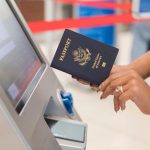Our path to financial freedom began with embracing minimalism, getting rid of all the excess stuff in our home, and changing our spending habits. Over time, I’ve found there are things I no longer buy and save hundreds of dollars each month.
1. Books
I love books. They are easy to order online, or pick up at Target or the airport to take on vacation. But if you’re pursuing financial freedom and working to get out of debt, this is an item to stop buying. Books are free at the library. The library has every kind of book including paperback, hard cover, e-book, and audio book. There is no reason to buy a book ever again. I love my small, highly curated book collection and my Kindle that stores hundreds with ease.
Additionally, if you’re searching for specific books, you can belong to multiple library systems, even the Library of Congress. Most libraries take book requests to add to their collection. I have fifteen books on hold at the library right now, many are new releases, and I’m never without something exciting to read. Year ago, I got rid of nearly all my books, started reading daily, and have saved thousands of dollars by borrowing from the library.
2. Bottled Water
The 1990s solidified bottled water’s place in American culture when Pepsi and Coke introduced their bottled water brands. I remember my college professor saying he bought the bottle of water so he could reuse the bottle. How I wish that were true. Americans buy 50 billion water bottles per year and only 3 out of 10 are recycled.
This is an item I no longer buy because of the unnecessary expense. There are sustainable water filter alternatives that are much more cost effective.
3. Endless Streaming Services
Many people cut the cable cord to save money. But when was the last time you tallied up all your monthly streaming subscriptions? Are there any duplicates? Is your family paying for multiple accounts on different devices such as phones and gaming systems? Without discipline, costs add up quickly.
Additionally, have you considered which subscriptions your family actually uses? Do your kids even watch TV or just YouTube? We discuss this every few months as a part of our budget review and cancel lesser used subscriptions.
Try this. Add up your subscriptions by month and calculate the annual cost too. Then, set a new budget. Cancel subscriptions for a few months and see if you miss them. Living with constraints is a helpful way to experiment with less. We swap services every few months to be intentional about our TV watching and save money.
4. Bulk Shopping Memberships
Over five years ago, we also experimented with canceling our Costco membership. It worked. Memberships start at $60 and the $120 level is enticing because of the cash back and exclusive benefits. But have you done the math to prove this membership is really saving you money? Remember, credit cards encourage you to spend more. Are you confident that the items you buy are cheaper than other stores? Have you factored in the membership fee and impulse purchases? Most products can be found for the same price or better if you do your homework. And it’s easier to store 6 rolls of paper towels than 24.
5. Items With A Coupon
When companies launch a new product, they often offer a coupon because advertising works. They want you to try the item, hopefully enjoy it, and keep buying it. But generally speaking, the current version you already love is just fine. Coupons create a perceived need and trick you into buying. All coupons are a form of advertising. Instead, set a grocery budget and stick to it. When it comes to coupons, if you don’t already use the item, skip it, and save your money.
Which item will you stop buying and save money next month?
Read the full article here
















